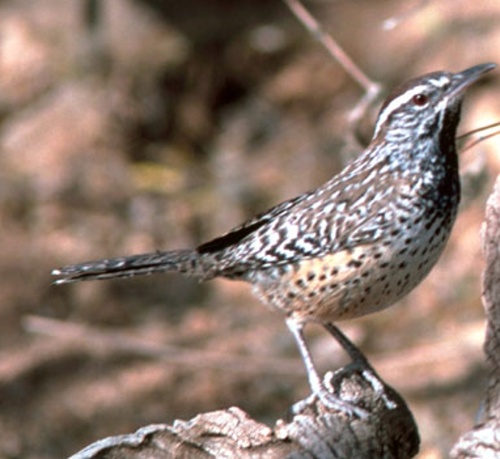The 2007 Witch Fire was a devastating fire for people and wildlife, especially for the troubled cactus wren which has seen its habitat slowly squeezed down and out for decades now. It’s bad enough the songbird was struggling for survival pre-fire, but with the conflagration destroying much of the bird’s shrunken habitat, it’s a down-right shame.
Scientists are stepping up to the plate to study the bird in an effort to better help chart its course for success. And they are taking up residency at a local habitat most known for lions, cheetahs and giraffs: the San Diego Zoo Safari Park. On a 900-acre plot away from tourists, scientists from the U.S. Geological Survey, the Nature Reserve of Orange County and the San Diego Zoo Institute for Conservation Research are watching nests, tracking banded cactus wrens, collecting feathers for genetic analysis, among other activities.
Protected under the Migratory Bird Treaty Act, the cactus wren is listed as a California Species of Special Concern. Not much is known about this bird which is largest wren in North America. Scientists hope to discover more about its habitat needs and how to best restore its habitat.
The dilemma of the cactus wrens illustrates just how intertwined wildlife is with its specific environment; change the landscape, change the health of a creature.
In this tucked away area of the Park, (known as the Safari Park Biodivesrity Preserve), scientists have been restoring cactus scrub, a slow and laborious process which has been hampered by an invasion of nonnative grasses. (Landscape designers, take note!) Here, the team will be setting up shop for a while as they track, record and study this lovely bird that creates, we must admit, a non-musical song that’s akin to an old-fashion sewing machine (sorry, CW, we have to be honest!)
Bryan Endress, Ph.D., San Diego Zoo Institute for Conservation Research director of Applied Animal Ecology summed up the situation via press release:
“Cactus wrens only make nests in prickly pear or cholla cactus greater than 3 feet in height. Without it, they cannot survive. Native cactus and coastal sage scrub habitat is not only beneficial to cactus wrens but also supports a wide range of other native wildlife, and this is one of the reasons San Diego County is globally known as a biodiversity hotspot.”
— Brenda Rees, editor

